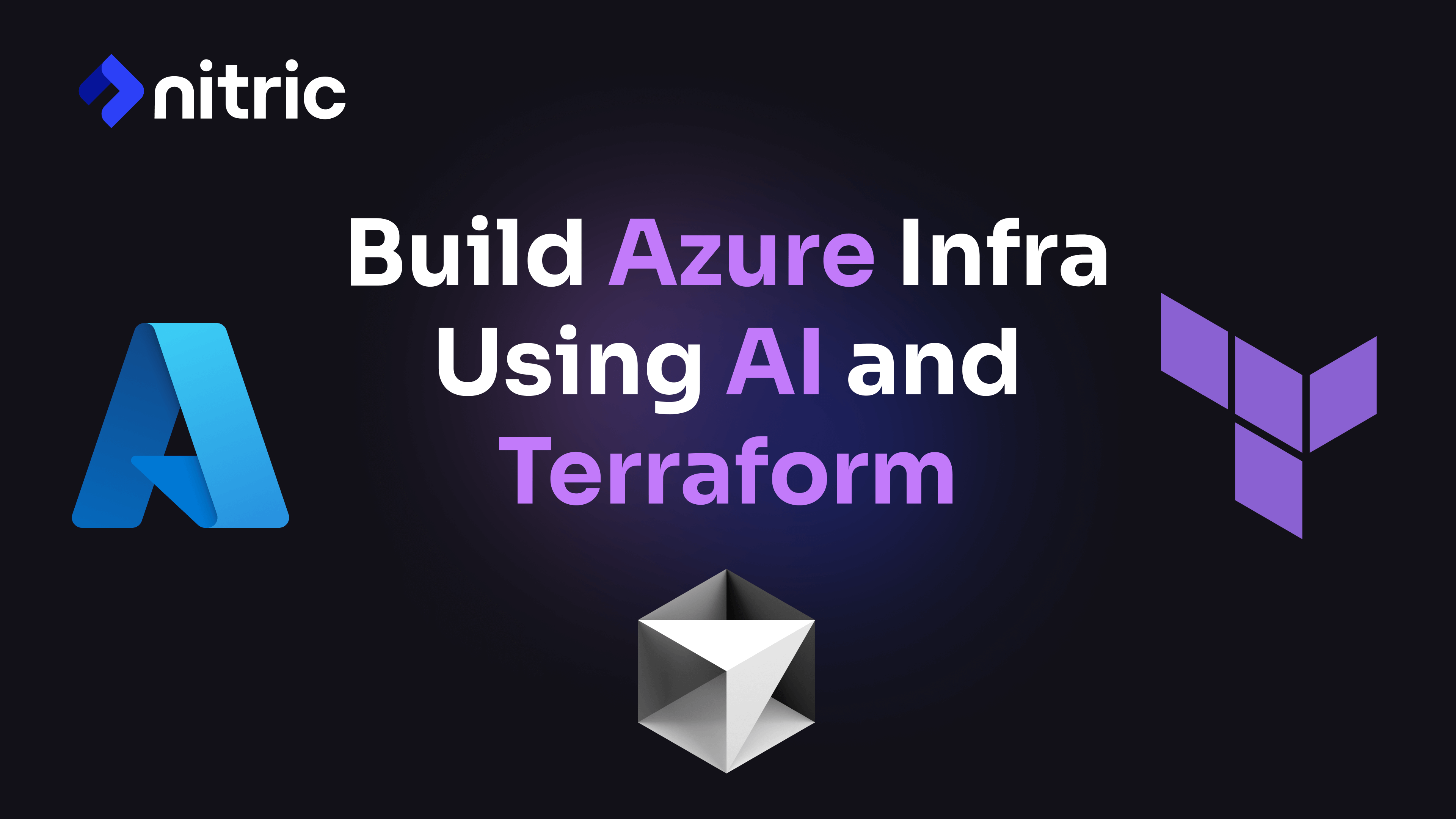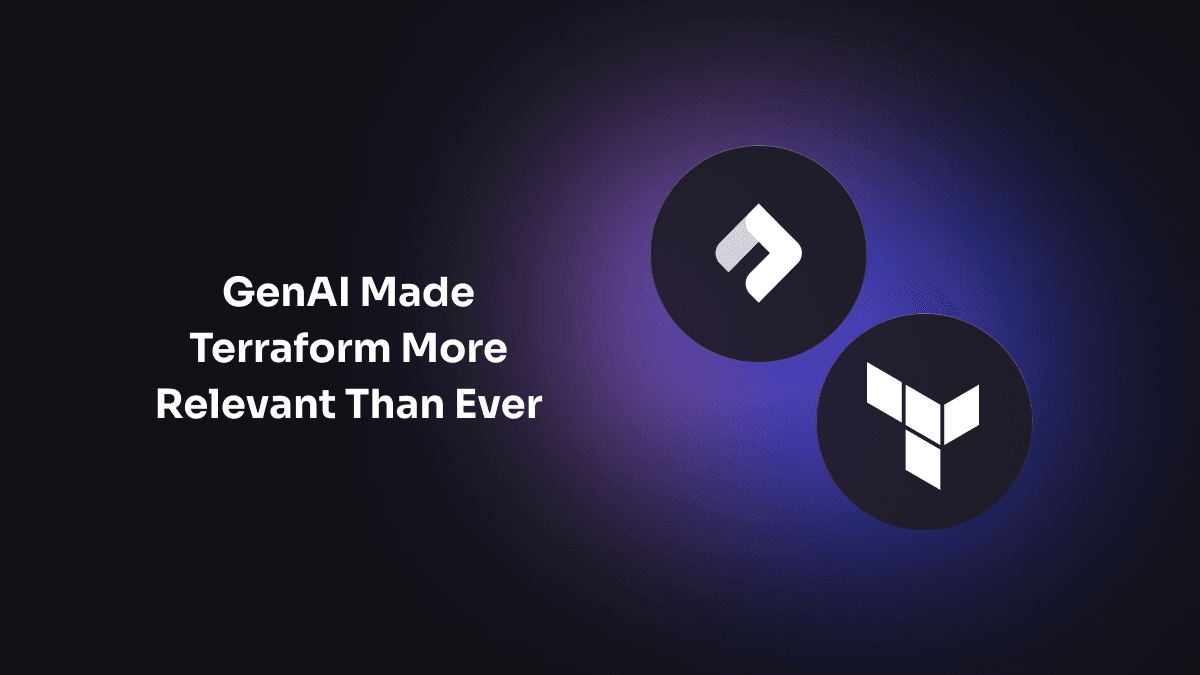The Hidden Toll of Infrastructure on Developer Productivity
The future of software innovation depends on unlocking every developer's and engineer's creativity by removing infrastructure burdens.
For modern software teams, a dirty little secret is sapping productivity: Infrastructure configuration and management constantly distract developers from writing code. But addressing this requires rethinking long-held assumptions.
In the old days, developers coded applications and “threw them over the wall” for infrastructure teams to deploy and run. This painful bifurcation led to friction and finger-pointing when issues arose.
The DevOps movement promised to break down the developer-infrastructure divide through practices like Infrastructure as Code and shift-left testing. But has this gone far enough?
The Infrastructure Tax on Development Teams
Infrastructure tasks like provisioning cloud resources, configuring networks and managing APIs remain burdensome time sinks diverting developer attention.
For example, a simple “Hello World” application requires substantial scaffolding to run on AWS — S3 buckets, Lambda functions, IAM roles and more. Using Terraform, this boilerplate can easily reach hundreds of lines for what should be just a few lines of code.
Nitric is the cloud-aware framework that enhances developer productivity and ops confidence, uniting backend and infrastructure code to build and ship cloud apps fast. Devs build your application, Platform determines the right infrastructure and Nitric automates provisioning that works for both.
Production applications often have thousands of lines dedicated solely to cloud infrastructure resources, not core logic. As developers, we enjoy coding, not configuring. But constant infrastructure distractions inhibit achieving flow.
I’ve witnessed this firsthand at large enterprises, where getting a new environment from IT or platform teams took weeks due to change approval processes and ticket queues. Developers would waste time context switching or waiting rather than writing code.
Rethinking Infrastructure Delivery for Productivity
Some may argue developers should handle infrastructure tasks themselves as part of the shift left. However, this ignores the unnecessary context switching imposed upon engineers between application and infrastructure modes.
Developers deserve easy access to infrastructure, but manually configuring it shouldn’t be required. We must rethink how environments and resources are delivered to unlock developer productivity.
Forward-looking organizations are shifting left not just tests, but also infrastructure provisioning. Developers describe intents and dependencies in code, which automatically configures the necessary resources just in time.
With infrastructure demands met on demand, developers avoid context switching. They declare requirements and the system handles the provisioning intricacies behind the scenes.
This brings infrastructure closer to developers without mandating they become infrastructure experts themselves. Automation allows them to focus on writing business logic and delivering value quickly.
Improving Velocity for Platform Teams Too
Automating infrastructure provisioning doesn’t just help developers — it also enables platform engineering teams to focus on security, governance and reliability rather than tickets.
When developers can self-serve their needs to be productive, it alleviates platform teams from repetitive, manually intensive provisioning tasks. Time spent on infrastructure requests drops dramatically.
With provisioning being automated, platform teams gain visibility into the entire infrastructure life cycle. They can shift left security scanning and implement guardrails for governance. Cloud costs also become transparent.
For small teams without dedicated platform roles, automation provides knowledge resilience.
Developers avoid risky situations where only one person holds infrastructure knowledge. This expertise is preserved, allowing them to remain focused on delivering features.
The Future of Software Requires Rethinking Infrastructure Delivery
Fundamentally, we need to align infrastructure provisioning with modern software team expectations to unlock productivity. Developers deserve easy access to ready environments without context switching.
Forward-looking solutions are emerging to embrace this shift-left ethos. Some offer intent-based Infrastructure as Code with automatic provisioning. Others provide self-service environments via CLI.
Examining these innovative approaches can help organizations rethink infrastructure delivery beyond legacy models and manual ticketing. Modern productivity requires infrastructure on demand.
The future of software innovation depends on empowering developer velocity and flow. Rethinking how we deliver infrastructure is key to unlocking engineering creativity, accelerating release cycles and delighting customers. The time has come to declare developer productivity a first-class priority.
Signs Your Organization Needs to Rethink Infrastructure Delivery
How can you diagnose if inefficient infrastructure delivery is slowing down your developers and platform teams? Consider if any of these symptoms sound familiar:
Developers spend inordinate time configuring cloud resources and environments. Lots of context switching between application code and infrastructure. Weeks-long lead time for new environments due to change approval processes. Lack of visibility into infrastructure usage and costs. Concentration of infrastructure knowledge in one or two personnels. Reliance on tribal knowledge for infrastructure management. The more these dysfunctions resonate, the more your organization could benefit from reimagining how infrastructure is delivered to maximize productivity.
Look for solutions that:
- Provide self-service infrastructure provisioning.
- Allow declarative descriptions of infrastructure needs in code.
- Automatically configure cloud resources just in time.
- Work across all major cloud providers with consistency.
- Offer visibility into cloud costs for FinOps.
- Integrate with developer IDEs and workflows.
- Have prebuilt templates and guardrails for governance.
- Support gradually onboarding legacy infrastructure.
While shifting left can overwhelm developers with infrastructure responsibility, next-generation solutions aim to shift left provisioning in a developer-friendly way, by automating the configuration process. This approach provides cloud portability and consistency, allowing developers to focus on code rather than infrastructure. In turn, developer productivity is unlocked, platform team efficiency is improved and innovation is accelerated.
Provisioning infrastructure on demand ultimately allows developers to focus on what matters most — quickly delivering value to the business. Platform teams can shift their focus to security, compliance and optimizing how infrastructure is consumed.
Moving from manually intensive provisioning to intelligent automation benefits all of IT. But it requires openness to rethinking legacy assumptions. The future of infrastructure must align with the future of software delivery.
The Future Is Developer-Focused
Fundamentally, we built Nitric to align with the shift-left culture of empowering developers to deliver faster. We believe the future of software innovation depends on unlocking every developer’s and engineer’s creativity by removing infrastructure burdens.
As I mentioned earlier, a production-quality “Hello World” application deployed on Amazon Web Services can require hundreds of lines of Infrastructure as Code configuration to provision all the necessary cloud resources like S3 buckets, Lambda functions, API Gateways, IAM roles, etc. The Nitric version reduces this boilerplate down to just the core five or six lines of application code.
If this vision resonates with you, please check out Nitric today. We’re passionate about liberating developers from drudgery so they can focus on bringing ideas to life. We hope you’ll join us on that mission as we continue improving the developer experience. Let us know what you think.
This blog post originally featured on The New Stack.
Checkout the latest posts

Why I joined Nitric
Why I left the corporate world to join Nitric

Build Azure Infrastructure Using AI and Terraform
Learn how to leverage AI and Terraform to build and deploy Azure infrastructure directly from your application code with Nitric.

GenAI Made Terraform More Relevant Than Ever
Infrastructure as Code is more alive than ever, but it is no longer something teams should write line by line.
Get the most out of Nitric
Ship your first app faster with Next-gen infrastructure automation

